
|   |

|   |
Yugaantar presents a burgeoning Kadamb tree in bloom - Dr. S.D. Desai e-mail: sureshmrudula@gmail.com Photos courtesy: Kadamb February 16, 2020 Yugaantar celebrations continued the next day (Feb 5, Tagore Hall). Moments of fulfillment for Kumudini Lakhia, a blessed soul who realized her calling was dance early in life despite having had formal education in a different subject. At the threshold of 90, she was one of the first to be in the auditorium at the Tagore Hall welcoming everyone with a smile and words of welcome. 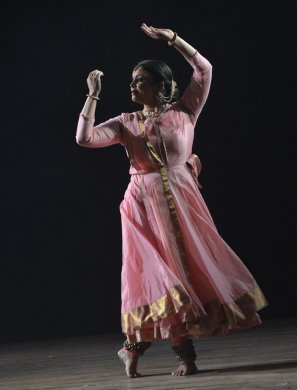 Gauri Diwakar Today a talented disciple of her eminent disciple, Gauri Diwakar currently under the mentorship of Aditi Mangaldas, presented a spellbinding performance in which the medium of her art pursuit, Kathak integrates with the theme. The conceptualization of the theme Samaratri - A Night of Divine Union and her imagery during the performance speak of her sensibility. With a complementary contribution made by Drishtikon musicians, the dancer-choreographer explores through the character of Goddess Parvati, Lord Shiva's consort, the nature of Reality with Shiva Ratri, when Day and Night are equal - 'not a beat more, not less' - as her reference point. It is a fascinating theme with two intensely engaging explorations - of Shiva as a permeating divine reality and of Night representing the advaita with Day rarely noticed and an exquisitely beautiful portrayal of Parvati and her union with Shiva. Drishtikon's Samaratri in Gauri's solo performance presents it with luxuriant visual imagery drawn by her as much from Kathak as from the concept sourced from the Vedic thought and from relative creative depictions in Kalidas's epic Kumarasambhavam. 'What is your Reality?' Parvati in Shiva's lap asks. Would Shiva spell out what it is? The essence of Shiva has so evolved and got one with the universe, perhaps now he himself can't! Such are his manifestations. There is a strong suggestion of that Reality made with the text, the music and the charmingly evocative images that take shape and before you put your finger on one in recognition it vanishes and gives shape to another. Like her mentor, Gauri showed to the young dancers a peak beckoning to them. Rupanshi Kashyap led Mitali and Rohit in Kadamb's opening dance piece 'Upaj'. The two female dancers are its senior students who are also teachers and Rohit joins the performing group from time to time. There was freshness and spontaneity in the joyous visual interaction that they developed dancing to Atul Desai's stimulating music. The music set the mood right away as they entered. The simple costumes and Gyan Dev's lights design enhanced the lyrical quality of their dance. 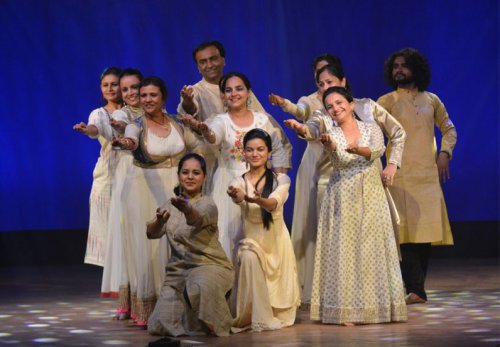 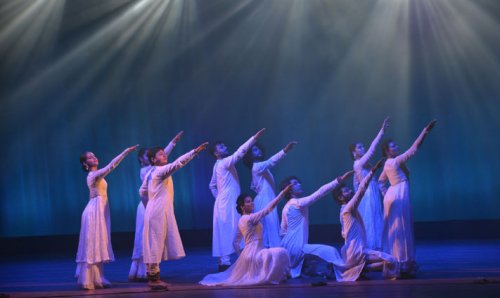 She has often pointed it out that her dancers do not go on stage with their classroom work. They are cast in a special choreography and they carry with them a special aesthetics of presentation along with it. Even the plain backdrop the lights have given a soft hue to, does not intrude. All details are meticulously worked out and they mingle with the rest. The dancers, even if they are young students, get into their best and assume a sophisticated glow. In its lyrical visual quality it is inimitably so different and original that knowledgeable viewers often set it apart as a work representing the Ahmedabad gharana of modern Kathak. Discerning viewers got a sneak peek at the process of the making of this gharana when kids came on the stage to participate in the memorable felicitations to their legendary guru who has taken care to see that this epithet is not used for her at Kadamb. They saw its trail as in lightning towards the end. On a bare stage bathed in soft light with a warm touch, Zeya stood deep in the centre for a while when a caring unaffected voice - recognizably Rupanshi's - cooed, 'Beta, Vahaa-n kyo-n khadi ho? Aage aao!' The kid, not yet 10, learning her initial tiny steps in Kathak, with no signs of feeling shy walked to the front centre spot. 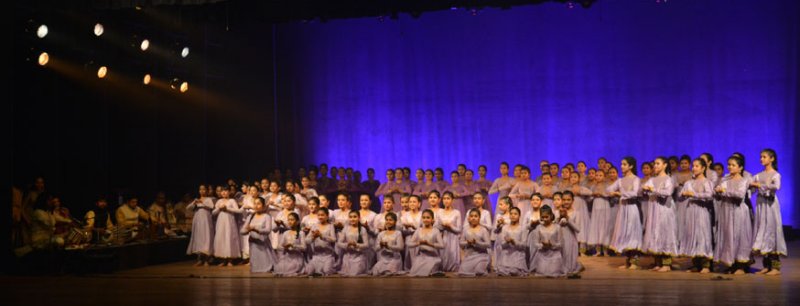 And then the magic began. Groups of tiny Kathak learners streamed in unaccompanied and with visible joy. No one faltered. No one hesitated or looked for cues from the wings. To live music, they 'introduced' all elements of Kathak, Kadamb's Kathak - expressive mudras, rhythmic foot-work, dainty split group formations, graceful movement, visual interaction, completing a rhythmic pattern on sam with poise, a modest effort at bols, simple chakkars, a bit of flight and what have you. A lifetime experience for them all of being on the stage and dancing to Teentaal, Jhaptaal and even Dhamaar on a special occasion! Rupanshi has a modest reputation for her dramatic touch to such events. On behalf of the faculty and students, she had prepared a six-minute Taufa for their iconic guru and kept it in suspense till the end. When celebrations seemed coming to a close, mein akela hi chala tha ...log saath aate gaye kaarava-n banata gaya... her voice intoned famous Majrooh Sultanpuri lines. A small group of Kadamb dancers, present and past, formed a group on the stage and gave glimpses, just glimpses, of Kumiben's choreographies with musical excerpts. "Kathak is like my grandma's old sari," the voice continued, recalling their guru's simple words, "It's beautiful. But I need to repair it in order to preserve it." "Kathak is the body. Give it the mind that it needs," they reminisced. And the assurance, "We shall continue to find answers with generations to come to questions you have given us the freedom to ask." When all of them - the 'babies of Kadamb', teenage learners, senior performers and faculty - were on stage, Kumiben was taken to it from the auditorium and seated right in the centre with them; the sight must have been parents' pride and God's envy. They represented the burgeoning Kadamb tree in bloom. The audience, taking in the fragrance of its flowers remained at their seats standing pretty long, when Kumiben happily enjoying their warm bond said, 'Have jaav gher! Go home!' 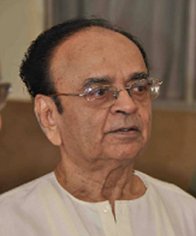 Dr. S.D. Desai, a professor of English, has been a Performing Arts Critic for many years. Among the dance journals he has contributed to are Narthaki, Sruti, Nartanam and Attendance. His books have been published by Gujarat Sahitya Academy, Oxford University Press and Rupa. After 30 years with a national English daily, he is now a freelance art writer. |